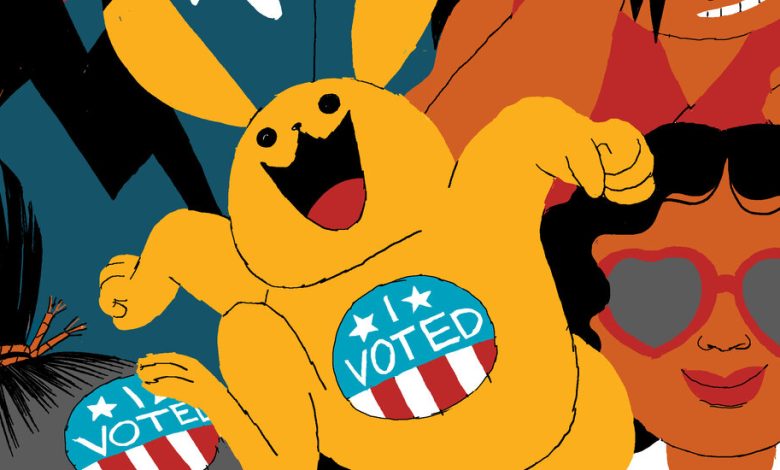Could Swifties or Trekkies Decide the Election?

After Emily Sundberg reported in her daily business newsletter, Feed Me, that the Working Families Party is looking to hire a “fandom organizing coordinator,” she got a bunch of emails from readers scoffing at the idea of such a position. It is silly, for example, to imagine organizing devotees of J.R.R. Tolkien via social media for political action. What’s next, “Orcs for Biden”?
But despite the good-natured skepticism, Sundberg said she understands and respects what the Working Families Party is trying to do. The job listing explains that the role is meant to help the party “better navigate and set up systems for utilizing the power of fandoms to expand W.F.P.’s base and profile.” And Sundberg thinks that political parties gaining entree into fan communities has the potential to be effective if done properly, particularly when it comes to reaching younger voters who are savvy about social media marketing and can be appropriately cynical about the effectiveness of our current political system.
I agree. Social media is where many young voters live — about a third of adults under 30 regularly get news from TikTok, according to Pew Research. And turning out young voters who are otherwise not particularly politically engaged will be key to winning elections up and down the ballot in November. The left-leaning Working Families Party isn’t exactly a threat to take the White House in 2024, but it is on to a new way of reaching Gen Z voters at a time when the old ways are increasingly useless.
As Marcela Valdes explained this week for The New York Times Magazine, young voters tend to have low turnout rates. “No one is more ambivalent about participating in elections than young people,” she wrote. (It’s worth noting, though, that turnout among Americans ages 18 to 29 was historically high in 2018, 2020 and 2022, according to C.I.R.C.L.E., the Center for Information and Research on Civic Learning and Engagement at Tufts University.)
There’s no getting around the fact that Donald Trump and President Biden are senior citizens and therefore may have trouble convincing young voters that they’re attuned to their concerns. “Young people are more engaged with people that look like them and share their lived experiences,” said Ashley Aylward, a senior researcher at HIT Strategies, a public opinion research firm that focuses primarily on younger voters and underrepresented communities. And, she says, because young voters are good at detecting slick and phony marketing, campaigns “kind of have to take this backdoor approach of reaching them through where their interests already are and through any of the messengers that they already trust.”
Enter fandoms, which are subcultures organized around devotion to specific cultural passions, from Beyoncé to sneakers to cult classic TV shows.



